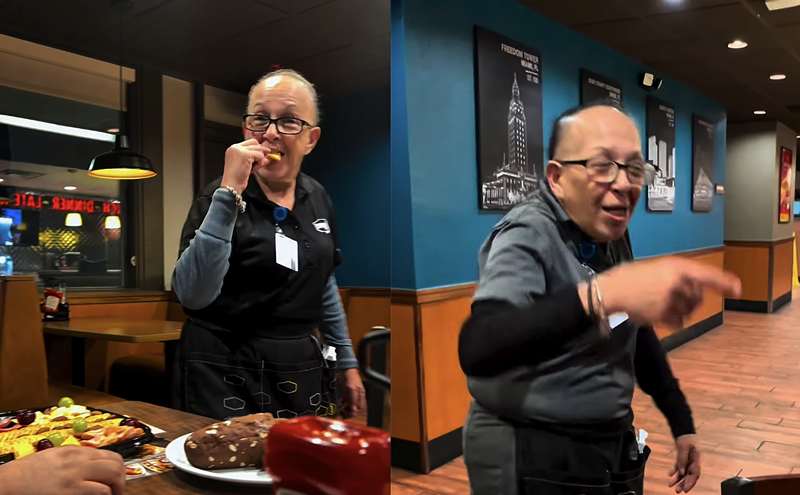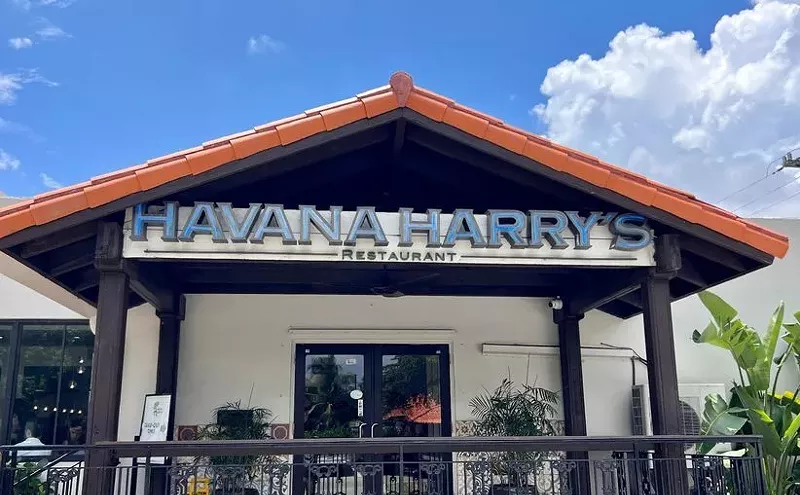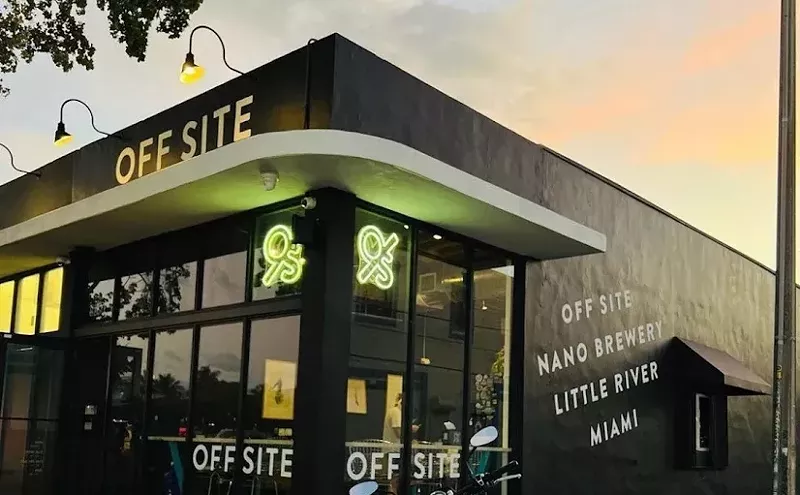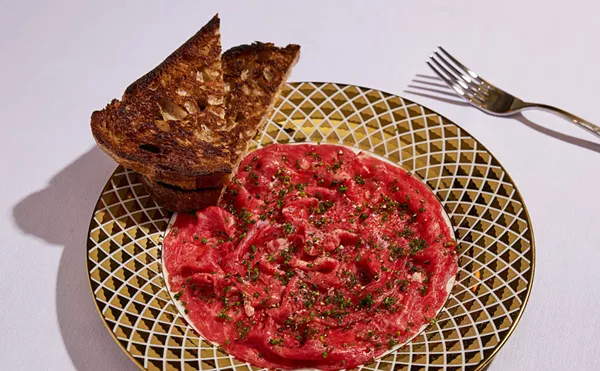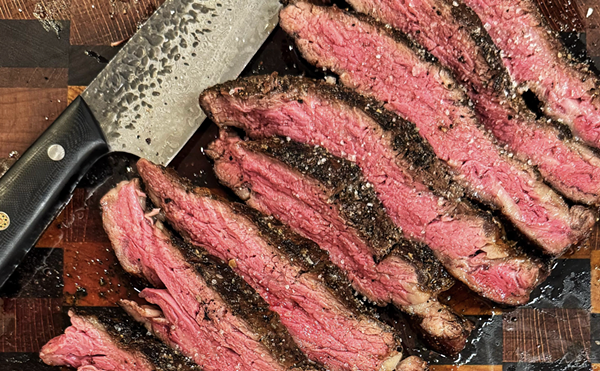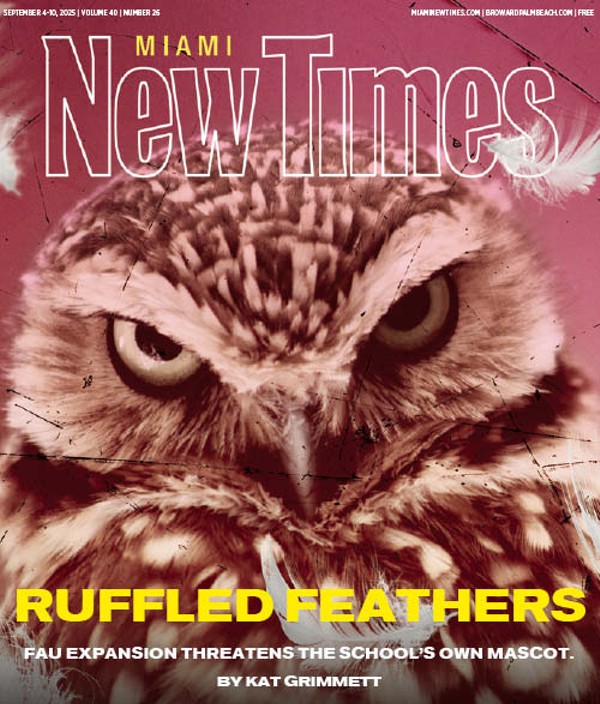The wine collection is a time machine unto itself, housing some 300,000 bottles, including arguably the most ambitious collection of nineteenth-century Burgundy and Bourdeaux in the country (dating back to an 1822 Lafite). Pick a label, choose a year, though you'll probably want to avoid 1992, which is when Hurricane Andrew dealt the Forge cellar a big blow -- to the tune of a seven-million-dollar loss. Nowadays it's back to where it was.
Andrew was just another memorable date in the Forge's intriguing and infamous history. Turn the dial to the Twenties, when artisan Dino Phillips forged ornamental gates in what was then his blacksmith shop. In the Thirties the building was transformed into a casino and open-air gallery where socialites would dance beneath the stars. The Forge was the place to go in the sizzling Miami Beach of the Fifties, not the place to go in the not-hot Sixties. The year was 1968 when Alvin Malnik bought the property and turned it around. In 1977 there was a shooting death on-site involving the stepson of mobster Meyer Lansky; in 1991 a fire destroyed the roof. Meanwhile the Beach was busy being reborn, and as Alvin's debonaire son Shareef entered the scene, the Forge's fortunes soared along with the city's, becoming ground zero for the influx of jet-setting, party-minded visitors -- the well-off who wanted to be well fed. It still is that place -- stretch limos double-lining the curb while moneyed patrons mix it up here and next door at the private dinner club Jimmy'z.
Nobody has told the waiters that the old days are gone. They dress in the formal attire of a bygone era -- not white gloves, but that's the treatment they give. The sommelier, too, wears the old-fashioned silver tasting cup around his neck, though admittedly this could be mistaken for the sort of bling favored nowadays by rappers. Some of the crew are long in the tooth and effect the somber bearing of butlers in Agatha Christie yarns, but there's something to be said for experience. Proprietors of Miami's trendier upscale restaurants needn't stuff their staffs into tuxedoes, although they might consider visiting the Forge and taking note of how waiters properly articulate menu items, replace flatware and plates, handle wines, and generally keep on top of things in a pampering (not pandering) professional fashion.
While service takes an anachronistic route toward pleasing the customer, and the wine list and décor favor the shock-and-awe approach, the Forge's cuisine has mostly been about satisfying with traditional steak-house staples of juicy sirloins, gargantuan lobsters, and family-style sides of potatoes, creamed spinach, and so on. Permit me to travel back eight years, to a night when my folks and I had dinner here (there are few restaurants more exhilarating to parents than this one). Long-time chef Kal Abdalla was still at the stoves, and I recall that after the waiters performed their synchronized lifting of silver domes from the large, oval entrée plates (always impressive), my father's filet mignon, alone in the middle of the expansive white dish, looked like an aerial photograph of a brown-capped man in a snowstorm.
Let's dash ahead to 2003, when chef Andrew Rothschild replaced Kal and proceeded to shake the foundations of the Forge menu by adding contemporary flair to the stodgy fare, and accompaniments to the entrées. Andrew Swersky inherited the chef position seven months ago, but he's been part of the Forge family a long while -- in fact, he helped create chef Kal's original menu. In spirit, though, Swersky is closer to Rothschild, adding global and Latin accents and forgoing the sparse, à la carte approach; filet mignon now comes with a small dollop of mashed potatoes and a bouquet of baby vegetables. Swersky, also like his predecessor, infuses his cuisine with all manner of modern comestibles: mache, microgreens, heirloom tomatoes, white truffles, golden beets, wakame, basmati, coconut risotto. When pork chops come with soba noodles and lotus root chips, you can be pretty sure, gastronomically speaking, this is not your father's Forge.
Predinner breads include Parmesan wafers, raisin-walnut toast, and warm onion-and-rosemary-flecked focaccia. There are about 40 ways to begin your meal -- soups, salads, pastas, thin-crust pizzas, a fairly extensive raw bar, and a slew of hot and cold appetizers. Steak tartare, an old standard that Swersky reinserted, is a melodious mound of red, raw, buttery beef enlightened by truffle oil, lemon juice, olive oil, soy sauce, Worcestershire, fresh herbs, and slightly piquant paprika aioli. Accompaniments missed: a poached egg on top too overcooked to drip luxurious yolk into the meat, and a prefried trio of plantain chips lacking the clean crispness of classic toast points. Escargots have never crawled off the menu, the half-dozen snails big and tender, a splash of Chardonnay effective in cutting the garlic and grease.
Organic arugula salad offers light passage to the heavy main courses, the peppery greens tossed with paper-thin shavings of fennel and Parmigiano-Reggiano in lemon juice and fruity green olive oil. Signature chopped salad is too fussy, the diced tomatoes, vegetables, and Gorgonzola cheese molded into a ribboned round of cucumber, with lettuce leaves protruding upward like feathers in a headdress. As with the plantain chips, this is another instance where the Forge should stick to the way things used to be: a big bowl of easy-to-eat salad.
Some things never change: Steaks here are still as solid as an anvil. A requested end cut of boneless prime rib eye (Delmonico) was near perfect, the crust darkly caramelized on a torrid grill, the juices thus sealed within the meat like water in a balloon -- didn't need anything but a little salt and pepper, though a rich, veal-based chanterelle sauce on the side did manage to take it higher. Both the waiter and menu reminded us that the signature "super steak," a sixteen-ounce portion of sirloin dry-aged for 21 days, has been cited by Wine Spectator as "the best steak in America." It is damn tender, with noticeably deep beef flavor. No more Forge 48-ounce Porterhouse, as big as a dinosaur and now as extinct.
Five types of fish come cooked simply over oak wood or busily garnished with global accompaniments. The plainest presentation in the latter group is a center cut of swordfish, which was grilled to just the right point of doneness and crowned with a sparkling mélange of roasted red and yellow peppers, kalamata olives, capers, olive oil, and a drizzle of rosemary butter. Dover sole, on the other hand, could make Blackwell's list of worst-dressed fish, the delicate flesh flashily sauced with coconut pineapple rum beurre blanc. A two- or three-pound lobster would be a safer bet for uncomplicated gratification.
A sweet and sticky "mahogany" glaze on oak-grilled chicken, in tandem with a fruity lingonberry sauce underneath, proved too cloying against the subtle, smoky flavor of the moist breast and nearly sabotaged an otherwise sensational sliced, boneless leg wrapped around savory cornbread-and-foie gras stuffing with parsley, sage, rosemary, and thyme (if this makes you think of Simon & Garfunkel, you're old enough to become a waiter here). A savory mold of Israeli couscous and a scattering of oak-grilled vegetables are served with the bird, though your table might want to share a couple of sides just the same. A worthwhile one to try would be "hash browns Lyonnaise," a fancy name for a fat, potato pancakelike puck of creamy yuca capped with sautéed onions. Shoestring potatoes are too similar to junk-food potato snacks, so I was disappointed (partly in myself for not asking about the dish beforehand) that "truffle-Parmesan fries" brought a plentiful pile of those cold, crisp, skinny sticks with nary a trace of cheese -- and even less truffle oil.
Chocolate soufflé was moister than cake but not quite runny enough -- overcooked by a mere minute or two. Just the same, the full, smooth chocolate flavor was right on the money, which is why the full, smooth chocolate sauce seemed redundant -- crme anglaise would've been a better partner. Other desserts (key lime pie, cheesecake, chocolate cake, and the like) are big and sweet.
Though the Forge's food is convincingly contemporary, there are probably other dinner spots to which you'll want to take those hipster visitors from New York (though keep Shareef's place in mind for party night on Wednesdays). The Forge is more suited for special occasions, or when you crave a great steak and Bordeaux, or for those times you just want to escape this hectic world and enter a genteel realm of glass and distinction.



